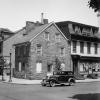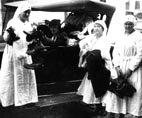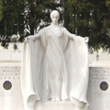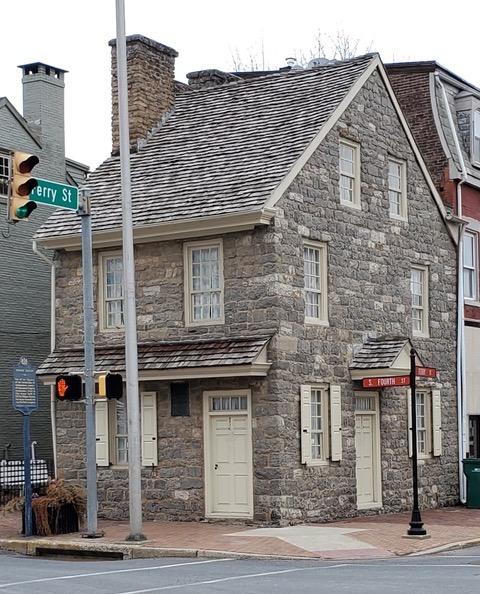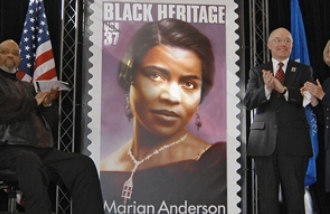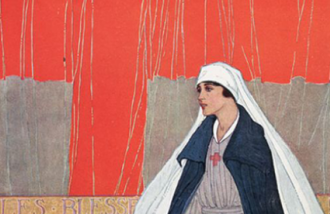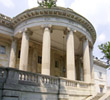LOCATION:
Northampton County
60 S 4th Street (on the corner of 4th and Ferry Streets)
Easton, PA 18042
HISTORICAL SIGNIFICANCE:
The Parsons-Taylor house is a fine survivor of the "Delaware Valley" architectural variation of the Georgian style, that once predominated in rural areas. The Parsons-Taylor house is also unique as the sole survivor of this style in the Lower Lehigh Valley. The house is a simple two bay Georgian stone structure that is 2 1/2 stories high, with a gable roof. The three 15 light windows on the first story are shuttered while the four upstairs are not. Twin chimneys are located on the north side of the building and are set flush with the outer wall. There are two doors which give access to the single room of the first floor. The single large first floor room has plastered south, west, and east walls. The north wall contains a stair, fireplace, and painted wood paneling. A 3-part circular stairway connects the four levels the house. In the basement are two massive arches supporting the fireplaces above. The second floor is divided into two rooms. Downstairs the flooring has been replaced with similar 18th century lumber. In the attic, handmade square nails are evident, and the original roofing of oak shingles can be detected. Near the chimney are stairs that lead up to a trap door which once gave access to the roof in order that any fires started on the wooden shingles by stray sparks could be extinguished. The Parsons-Taylor house is constructed of random cut stone from a nearby quarry bonded by burnt limestone mortar. The Parsons-Taylor house was constructed on town lot No. 176 by William Parsons between 1753 and 1757.
William Parsons, born in England 1701, arrived at Philadelphia in 1720, where he practiced the cobbler's trade. He accumulated enough funds to marry Christiana Zeidig and to also pursue the study of mathematics. Parsons soon displayed a great proficiency in mathematics and became a close friend of Benjamin Franklin. Parsons helped Franklin found the Junto Debating Club, which later became the American Philosophical Society, the Library Company of Philadelphia, and the Union Fire Fighting Company. His civic service culminated in 1741, when he was elected to the Common Council of Philadelphia. Parson’s abilities as a mathematician enabled him to become a successful surveyor. In 1741, he became the Surveyor General of Pennsylvania. Among his most notable accomplishments was the laying out of Reading. A combination of ill health and marital discord forced him to resign his post and accept a series of lesser governmental positions in Lancaster County. He continued to undertake surveying projects for the Proprietary Government. Later in life, Parson’s life centered on the establishment of Northampton County and Easton. As the agent of Thomas Penn, he laid out the site of Easton and established the new county's government in 1752. Parsons served as Justice of the Peace and School Commissioner. During the French and Indian War, he organized the frontier defense against attack and cared for displaced settlers. He also helped to organize the Easton Indian Councils which greatly aided the conquest of the "Forks of the Ohio". Parsons died in his new house on December 17, 1757. After his death, the dwelling became the property of John Hughes. Hughes died in 1772 and for the next decade the house became a rental property that was used to generate income.
In 1780, George Taylor leased this stone dwelling and once more brought it into the historical limelight. Pioneer industrialist, civic leader and a signer of the Declaration of Independence, George Taylor played a large role in the early development of the Lehigh Valley. Born in 1716, he arrived in Pennsylvania in 1736 and entered the burgeoning colonial iron industry. Through hard work and a fortunate marriage, he became the manager of the Warwick Furnace in 1742 and the Durham Furnace in 1775. Taylor did much to help the industrial development of the Upper Delaware Valley. Due to a dispute over the seizure of "Tory" properties, George Taylor lost control of some properties in 1778. Although he later resumed operations with new partners, he was never able to bring back profitability. Moving to New Jersey, Taylor operated the Greenwich Forge, near Philipsburg until his death. During his final year, he returned to Easton where he leased the Parsons house. He died in the upstairs bedroom of this structure on February 23, 1781. Taylor began his governmental career in 1761 when he was appointed as a justice of the peace for Bucks County. He soon switched the focus of his activities to neighboring Northampton County, which he served as justice of the peace and assembly representative. In 1774, he was an original member of the Northampton County Committee of Correspondence. He later served on the succeeding Council of Safety for this county. Taylor also became a militia colonel, although he saw no active duty.
HISTORICAL DESIGNATIONS:
- National Register of Historic Places
- State Historical Commission
- City Landmark
HISTORICAL MARKER:
- Marker Text:
GEORGE TAYLOR - ONE OF THE SIGNER OF THE DECLARATION
OF INDEPENDENCE, MEMBER OF CONTINENTAL CONGRESS,
IRON MASTERLIVED IN THIS HOUSE BUILT IN 1757
BY WILLIAM PARSON, SURVEYOR GENERAL, WHO WAS THE
FIRST OCCUPANT. – JULY 20, 1953 PA HISTORICAL & MUSEUM COMMISSION
FUNDING:
Funds are provided to maintain the property through the George Taylor House Association, fund raisers and donations. The George Taylor Chapter purchased the house in 1906 and formed the George Taylor House Association to oversee the property.
PHYSICAL CONDITION:
- Preserve
TOURISM:
- Open to Public: Yes
- Family Friendly: Yes
- Hours/Days: Tours by Appointment and Open House Events
- Fees: None
Acknowledgement:
This is the chapter meeting house for the George Taylor Chapter NSDAR. General and Educational Tours are given through open houses or appointments. Open Houses are held during Easton Heritage Day in July each year. We are getting more involved in the Historic Easton Committee and may be holding more open houses.
Original Owner: William Parsons
Current Owner: NSDAR George Taylor House Association
Other Images
